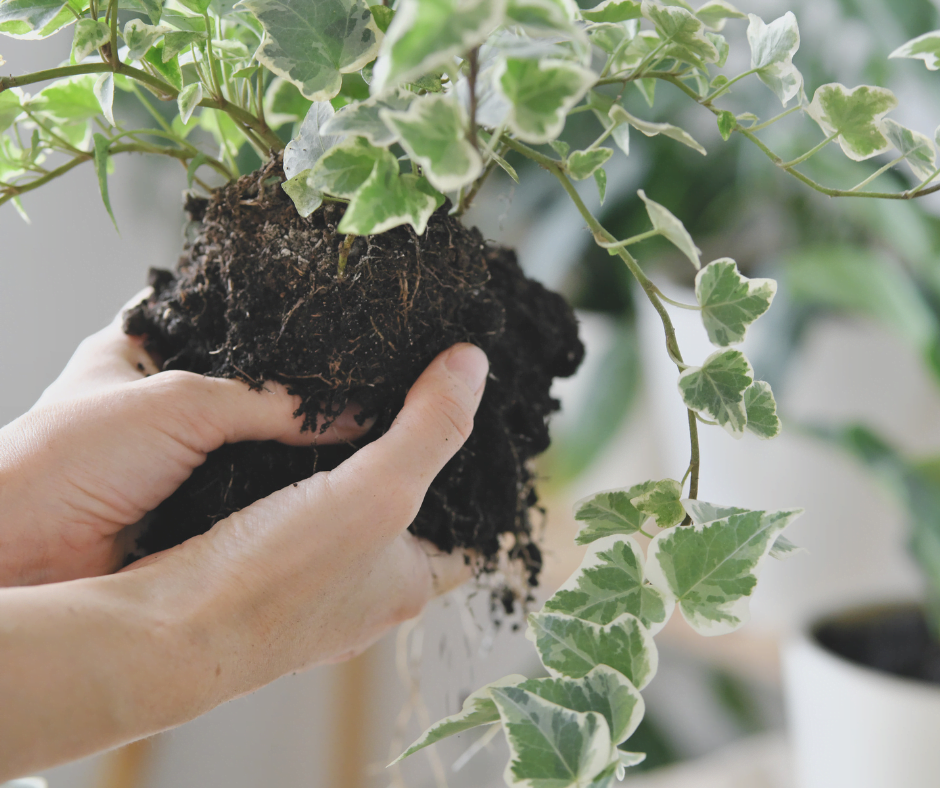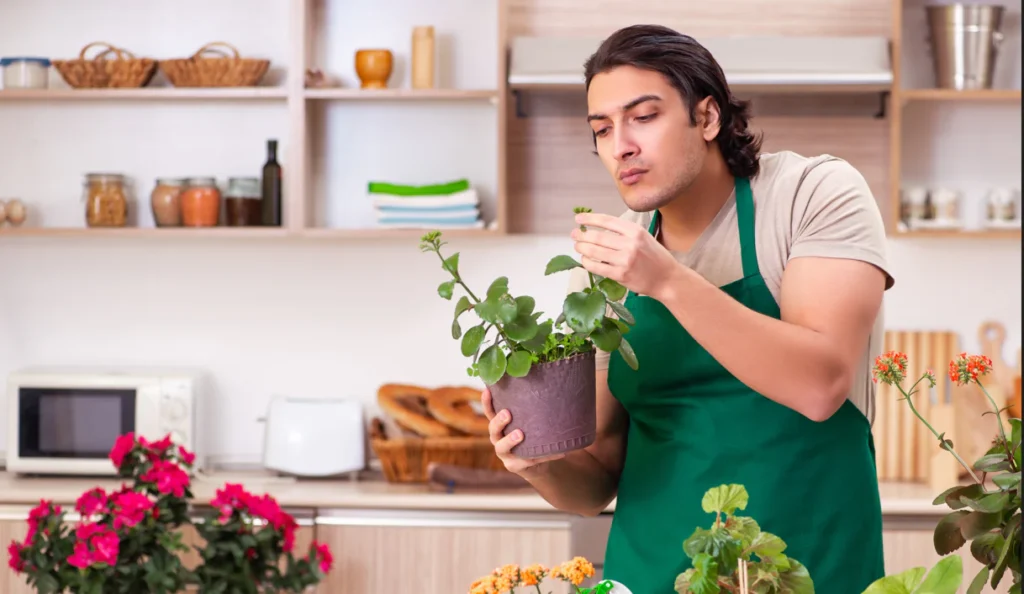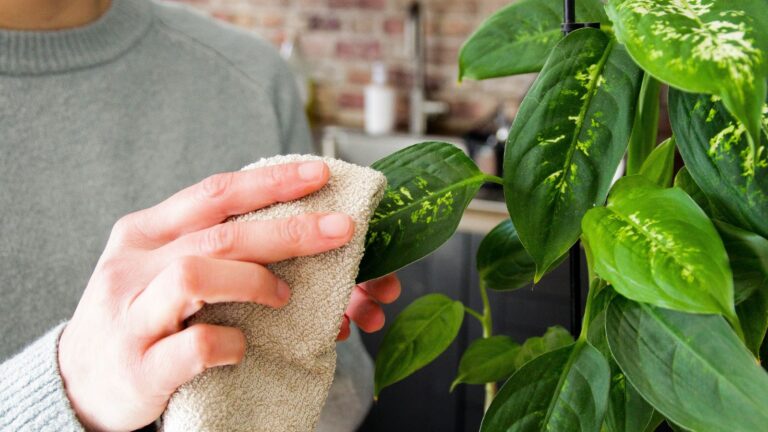Contents
Introduction
Ever found yourself staring at your once-beautiful apartment plants, now overtaken by pesky little critters? If you have, you’re not alone. Pest problems are a common headache for indoor gardeners. Whether you’re nurturing a lush fern, a vibrant orchid, or a simple spider plant, keeping those pesky bugs at bay is crucial for your plants’ health and your peace of mind.
Pest infestations can turn your thriving green space into a battleground of aphids, spider mites, and mealybugs. These tiny invaders can sap your plants’ energy, stunt their growth, and even kill them if left unchecked. But don’t worry! Preventing pest infestations is easier than you might think. With the right strategies, you can keep your apartment plants healthy and pest-free.
In this guide, we’ll walk you through some simple, yet effective, tips to protect your plants from these unwanted visitors. From choosing the right plants and maintaining their health to keeping your apartment environment clean, we’ve got you covered. We’ll also explore natural remedies and preventative treatments, so you can tackle any pest problem before it gets out of hand.
Think of this as your ultimate playbook for keeping your apartment garden lush and vibrant, free from the troubles of pest infestations. Ready to transform your plant care routine and ensure your green friends stay healthy and happy? Let’s dive in!
Choosing the Right Plants
Let’s start with the basics: picking the right plants for your apartment is one of the easiest ways to avoid pest problems. Believe it or not, some plants are like superhero defenders against bugs, while others seem to attract them like a magnet. By making smart choices from the start, you can set yourself up for a pest-free, flourishing indoor garden.
Selecting Pest-Resistant Plants
When you’re shopping for new plants, look for varieties that are known for being less appealing to pests. Plants like the snake plant, peace lily, and ZZ plant are famous for their resilience and ability to fend off common bugs. They have natural defenses that make them less attractive to those pesky aphids and spider mites. Opting for these hardy types can save you a lot of trouble down the line.
Understanding Plant Needs
Every plant has its own set of needs—think of it like a unique personality. Some thrive in bright, direct sunlight, while others are happier in low light. Similarly, different plants have specific water and soil requirements. By choosing plants that match the light and conditions in your apartment, you create an environment where pests are less likely to thrive. For instance, succulents love bright, dry conditions and are generally less prone to pests, while plants that prefer high humidity might need extra attention.
Choosing the right plants isn’t just about avoiding pests; it’s also about creating a thriving, happy space for your green friends. By aligning your plant choices with your apartment’s environment, you’re giving them the best shot at growing strong and staying pest-free.
Ready to start picking out some great plants? With the right selections, you’re one step closer to a beautiful, bug-free indoor garden!
Maintaining Plant Health
Alright, you’ve got your plants picked out and they’re already settling into their new home. Now it’s time to make sure they stay in tip-top shape and avoid any nasty pest problems. Think of maintaining plant health as giving your plants a healthy diet and exercise routine. The better care you provide, the less likely pests will want to move in.
Proper Watering Techniques
Watering might seem simple, but it’s a crucial part of keeping your plants healthy and pest-free. Overwatering is a common mistake and can lead to root rot and mold—both of which attract pests like fungus gnats. On the flip side, underwatering can stress your plants, making them more vulnerable to bugs. Aim for a balanced watering schedule that matches your plant’s needs. Use pots with good drainage and soil that retains just the right amount of moisture. This way, your plants stay happy and pests stay away.
Fertilization Practices
Just like people need balanced diets, plants need the right nutrients to thrive. Fertilizers can help provide these nutrients, but be careful not to overdo it. Too much fertilizer can lead to nutrient imbalances, which can weaken plants and make them more susceptible to pests. Use fertilizers according to the instructions, and consider organic options for a gentler touch. Regular, but moderate, feeding will help keep your plants robust and less attractive to pesky invaders.

Regular Pruning and Cleaning
Think of pruning and cleaning as a spa day for your plants. Removing dead or diseased leaves not only makes your plants look better but also prevents potential pest hideouts. Dust can also accumulate on leaves, which can hinder photosynthesis and create a cozy home for insects. Give your plants a gentle wipe-down with a damp cloth and trim off any unhealthy parts. This simple routine helps your plants stay healthy and discourages pests from settling in.
By keeping up with these basic care practices, you’re giving your plants the best chance at staying strong and avoiding pest problems. A little attention now means a lot less trouble later. Ready to dive into plant care? Your green friends will thank you!
Creating a Clean Environment
Keeping your apartment clean isn’t just about tidiness; it’s a key step in protecting your plants from pests. A clutter-free, well-maintained space helps create an environment that’s less inviting to bugs. Here’s how to make sure your indoor garden remains a pristine paradise.
Keeping Your Apartment Clean
A clean living space means fewer places for pests to hide and breed. Regular cleaning is essential, especially in areas where your plants live. Dust and debris can attract pests and lead to problems like fungal infections. Make it a habit to dust off surfaces, vacuum around your plants, and wipe down any plant stands or shelves. Don’t forget to clean up any fallen leaves or plant debris, as these can also become pest hotspots.
Managing Humidity Levels
Humidity plays a big role in pest control. Many common plant pests, like spider mites and mealybugs, thrive in dry conditions. If your apartment is too dry, you might find yourself dealing with more pest issues. On the other hand, too much humidity can lead to mold and mildew, which also attract pests. Aim for a balanced humidity level that suits both your plants and your living environment. Using a humidifier can help increase moisture levels if needed, while a dehumidifier can reduce excess humidity. Monitoring and adjusting your home’s humidity helps keep pests at bay and ensures a healthier environment for your plants.
By maintaining a clean apartment and managing humidity levels, you’re creating an environment that’s less appealing to pests. It’s a simple yet effective way to support your plants’ health and keep your indoor garden looking its best. Ready to keep things spotless? Your plants will thank you for it!
Inspecting Plants Regularly
When it comes to keeping your apartment plants healthy, regular inspections are your best friend. Think of it like a routine check-up at the doctor’s office, but for your plants. By keeping a close eye on your greenery, you can catch potential pest problems early and address them before they become a bigger issue.
Visual Inspections
Start by making it a habit to check your plants regularly for any signs of pests. Look closely at both sides of the leaves, as well as the stems and soil. Common pests like aphids, spider mites, and mealybugs can be sneaky, so take your time to look for tiny, telltale signs. For example, aphids often leave behind sticky residue, while spider mites can create fine webbing on the undersides of leaves. The sooner you spot these invaders, the easier it will be to manage them.

Touch and Smell Tests
Sometimes, pests can be identified not just by sight, but by touch and smell. Gently run your fingers along the leaves and stems to feel for any unusual textures, like a sticky or gritty coating. If something seems off, there might be pests at work. Also, trust your nose—plants with pest problems can sometimes emit unusual or unpleasant odors. If you notice any strange smells, it’s worth inspecting further to ensure there aren’t any hidden pests causing trouble.
Regular inspections are a small effort that can make a big difference in keeping your plants healthy and pest-free. By staying vigilant and addressing any issues promptly, you’ll help ensure your indoor garden remains vibrant and beautiful. Ready to become your plants’ best ally? Regular checks are the way to go!
Using Preventative Treatments
Think of preventative treatments as your plant’s personal bodyguard against pests. Just like you take steps to stay healthy, your plants can benefit from a little extra protection to keep bugs at bay. With the right treatments, you can head off potential pest problems before they even start.
Natural Remedies
If you prefer a more eco-friendly approach, natural remedies can be incredibly effective. Neem oil is a popular choice among plant enthusiasts. It’s derived from the neem tree and works by disrupting the life cycle of pests, preventing them from reproducing. Another option is insecticidal soap, which targets soft-bodied insects like aphids and mealybugs without harming your plants. You can even create your own homemade sprays using ingredients like garlic or hot peppers. These natural solutions are gentle on your plants and tough on pests.
Commercial Pest Control Products
Sometimes, you might need a bit more muscle to tackle stubborn pests. There are plenty of commercial pest control products available that can help. Look for products specifically designed for indoor plants, and always follow the instructions carefully to avoid any damage. Products like insecticidal sprays and systemic insecticides can be very effective, but use them as directed and consider them as part of a broader pest management strategy.
By incorporating preventative treatments into your plant care routine, you’re setting up a defense system that helps keep pests away. Whether you opt for natural remedies or commercial products, regular application can make a big difference in maintaining a healthy, pest-free indoor garden. Ready to give your plants some extra protection? With the right treatments, you’re well on your way to a thriving, bug-free oasis!
Implementing Physical Barriers
When it comes to keeping pests away, sometimes a little physical defense can go a long way. Implementing physical barriers around your plants is like setting up a security system to keep bugs from sneaking in. These simple but effective methods can help protect your plants and keep them healthy and thriving.
Protective Covers and Meshes
One of the easiest ways to keep pests out is by using protective covers and meshes. Think of these as bug-proof shields for your plants. Fine mesh covers can be placed over your plants to keep insects like gnats and flies from landing on them. You can find these covers in various sizes, so they fit snugly over different types of pots and plant sizes. They’re especially useful for plants that are more susceptible to pests or if you want an extra layer of protection for your indoor garden.
Isolation Techniques
Sometimes, new plants can come with unwanted pests. To prevent these from spreading to your healthy plants, try isolating new additions for a few weeks before introducing them to your main plant collection. This “quarantine” period allows you to monitor the new plants for any signs of pests and treat them if needed before they have a chance to infect your other plants. Additionally, if you spot any pests on a plant, move it away from your other plants to prevent the problem from spreading.
Implementing physical barriers and isolation techniques helps create a less inviting environment for pests and minimizes the risk of infestations. By taking these steps, you’re giving your plants an extra layer of protection and ensuring that your indoor garden remains a safe and healthy space. Ready to fortify your plant defenses? These practical measures can make a big difference!
Addressing Pest Problems Promptly
When it comes to dealing with pests, timing is everything. Catching and addressing pest problems early can make all the difference in keeping your plants healthy and happy. Think of it as nipping a problem in the bud before it has a chance to grow out of control.
Early Detection and Response
The sooner you spot pests, the easier they are to manage. Regular inspections help you catch any signs of trouble early. Look out for unusual spots on leaves, sticky residue, or tiny bugs crawling around. If you notice any of these warning signs, act quickly to tackle the problem. Early intervention can prevent pests from spreading and causing more serious damage. Treat affected plants promptly with your chosen methods, whether that’s natural remedies, commercial products, or a combination of both.
Professional Help
Sometimes, despite your best efforts, pest problems can get tricky. If you find that your pest issues are persistent or severe, it might be time to call in the professionals. Pest control experts have specialized tools and knowledge to handle tough infestations and can offer tailored solutions for your specific situation. Look for reputable pest management services that have experience with indoor plants. They can help you get your plants back on track and provide advice on preventing future problems.
Addressing pest problems promptly is key to maintaining a thriving indoor garden. By staying vigilant and taking action early, you can minimize the impact of pests and keep your plants in great shape. Ready to tackle those pesky invaders? Quick and effective responses will ensure your plants stay healthy and beautiful!
Conclusion
And there you have it—a comprehensive guide to keeping your apartment plants free from pesky pests! By following these straightforward tips and strategies, you’ll be well on your way to maintaining a healthy, vibrant indoor garden. It’s all about being proactive and attentive, from selecting the right plants and maintaining their health to creating a clean environment and using preventative treatments.
Remember, the key to a thriving, pest-free garden is regular care and quick action. Keep your plants healthy with proper watering, fertilization, and cleaning. Create an environment that’s not inviting to pests by keeping your space clean and managing humidity levels. Regular inspections help catch any issues early, while physical barriers and preventative treatments provide extra layers of protection. And if you ever face a tough pest problem, don’t hesitate to seek professional help.
With these tips in your gardening toolkit, you can enjoy a lush, green oasis right in your apartment, free from the worry of pest infestations. A little effort goes a long way in ensuring your plants stay happy and healthy. So, dive into these practices, and watch your indoor garden flourish without the hassle of unwanted pests!
Here’s to a beautiful, bug-free indoor garden—happy planting!



